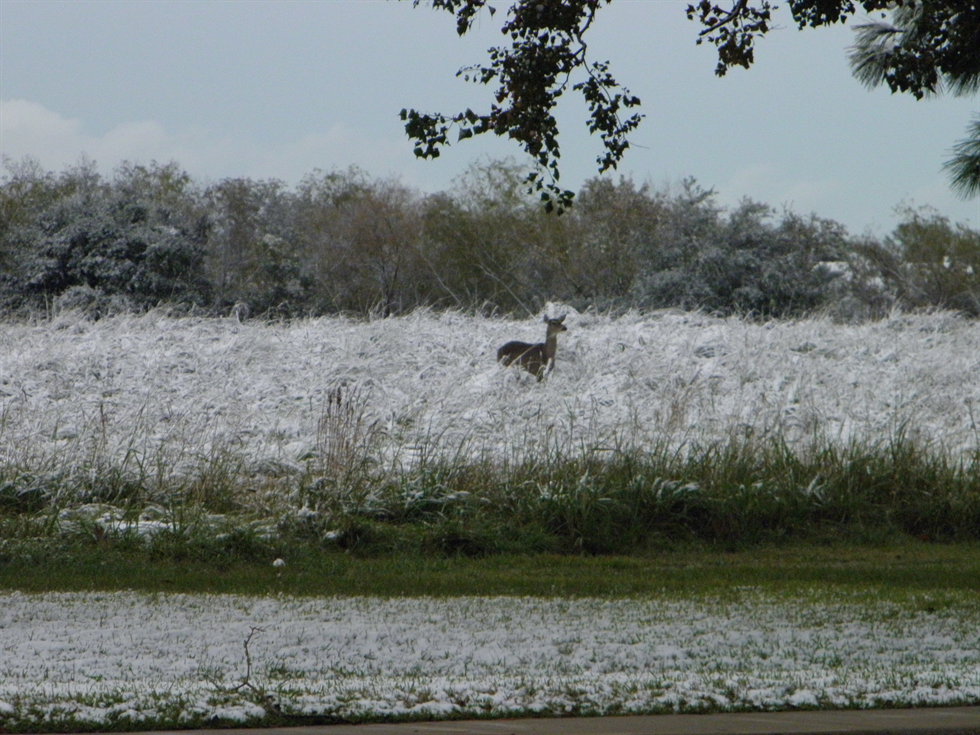Dreaming of a white(-tailed deer) Christmas
2017-12-13
The abundance of white-tailed deer at NASA’s Johnson Space Center varies each year. In the past five years, the deer population has, at times, swelled to nearly 300 and been as low as 150. Evidence suggests that the drastic variation in number is likely due to weather. Precipitation in the form of rain and snow is usually a limiting factor for the growth of plants on Johnson’s prairies and in the wetland forest. Deer depend on plentiful plants for nutrition, which is especially important for nursing fawns. In dry years, when plants are less abundant, the number of deer tends to be lower. The deer population, conversely, is higher during particularly wet years. Large rainfall events from tropical storms and hurricanes likely do not change the deer population significantly because the excess flooding rain does not aid the growth of vegetation. Measuring the variation in Johnson’s wildlife populations helps managers identify what changes are natural, and which deserve further attention.
December’s Sustainability Opportunities highlights metrics that NASA met for a "green" performance in energy efficiency based on criteria from executive orders. Take a quiz to see how much you know about sustainable buildings. Email us at JSC-Sustainability@mail.nasa.gov to be added to the distribution list.
Thanks to sustainability champion David Deloney for contributing this month’s wildlife photo.

Image Credit: David Deloney
Matt Strausser and Stacy Shutts
NASA Johnson Space Center
December’s Sustainability Opportunities highlights metrics that NASA met for a "green" performance in energy efficiency based on criteria from executive orders. Take a quiz to see how much you know about sustainable buildings. Email us at JSC-Sustainability@mail.nasa.gov to be added to the distribution list.
Thanks to sustainability champion David Deloney for contributing this month’s wildlife photo.
Image Credit: David Deloney
Matt Strausser and Stacy Shutts
NASA Johnson Space Center







